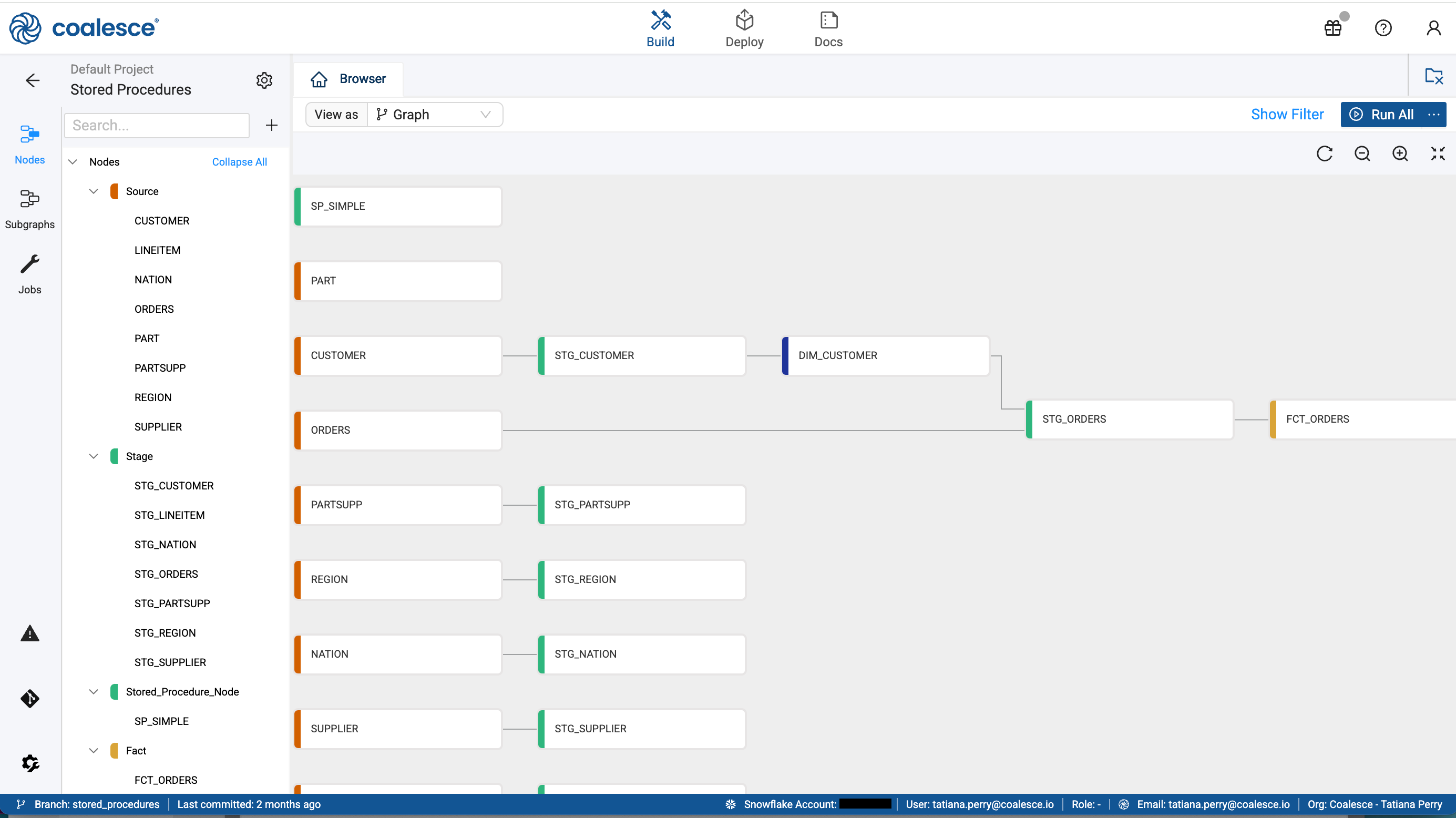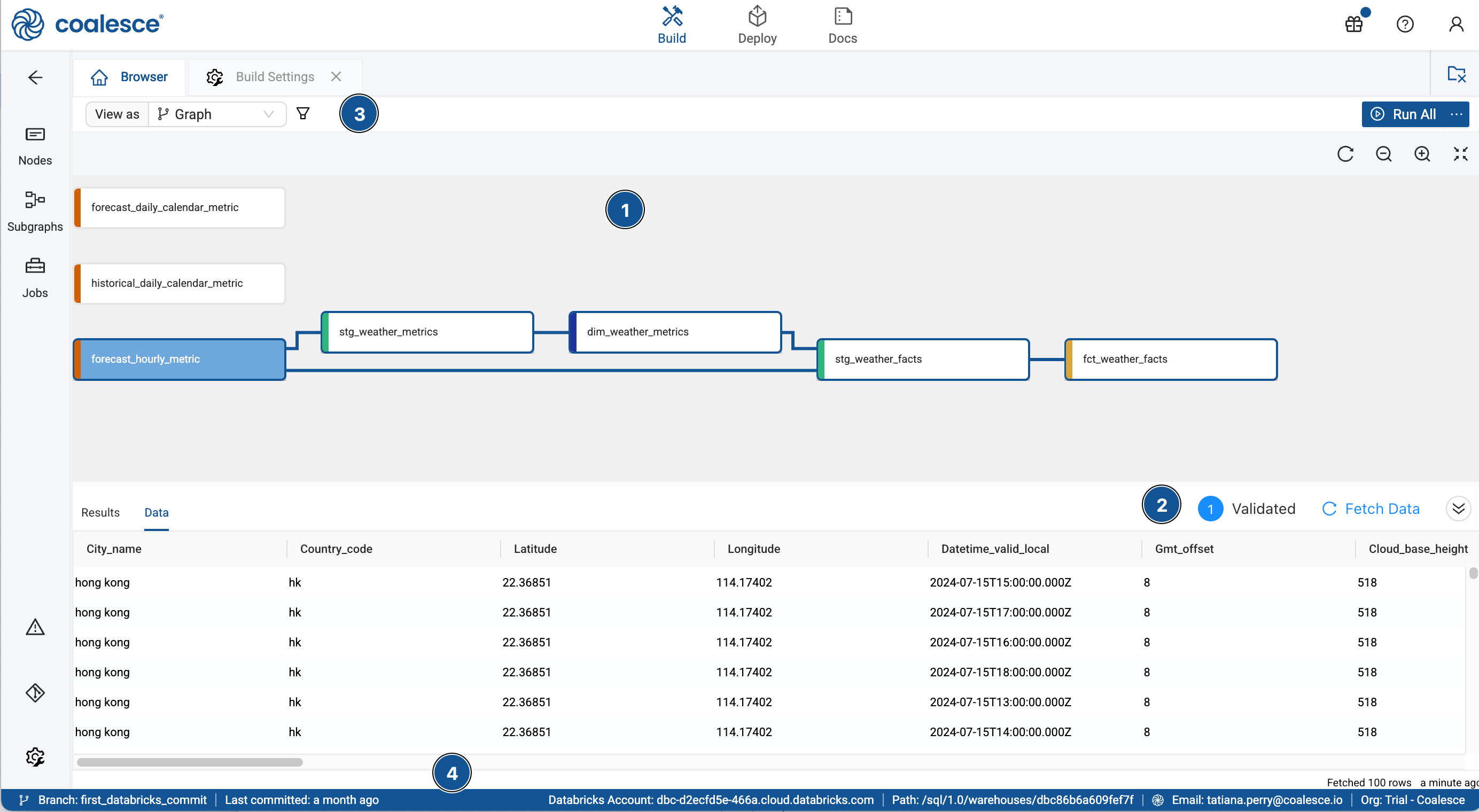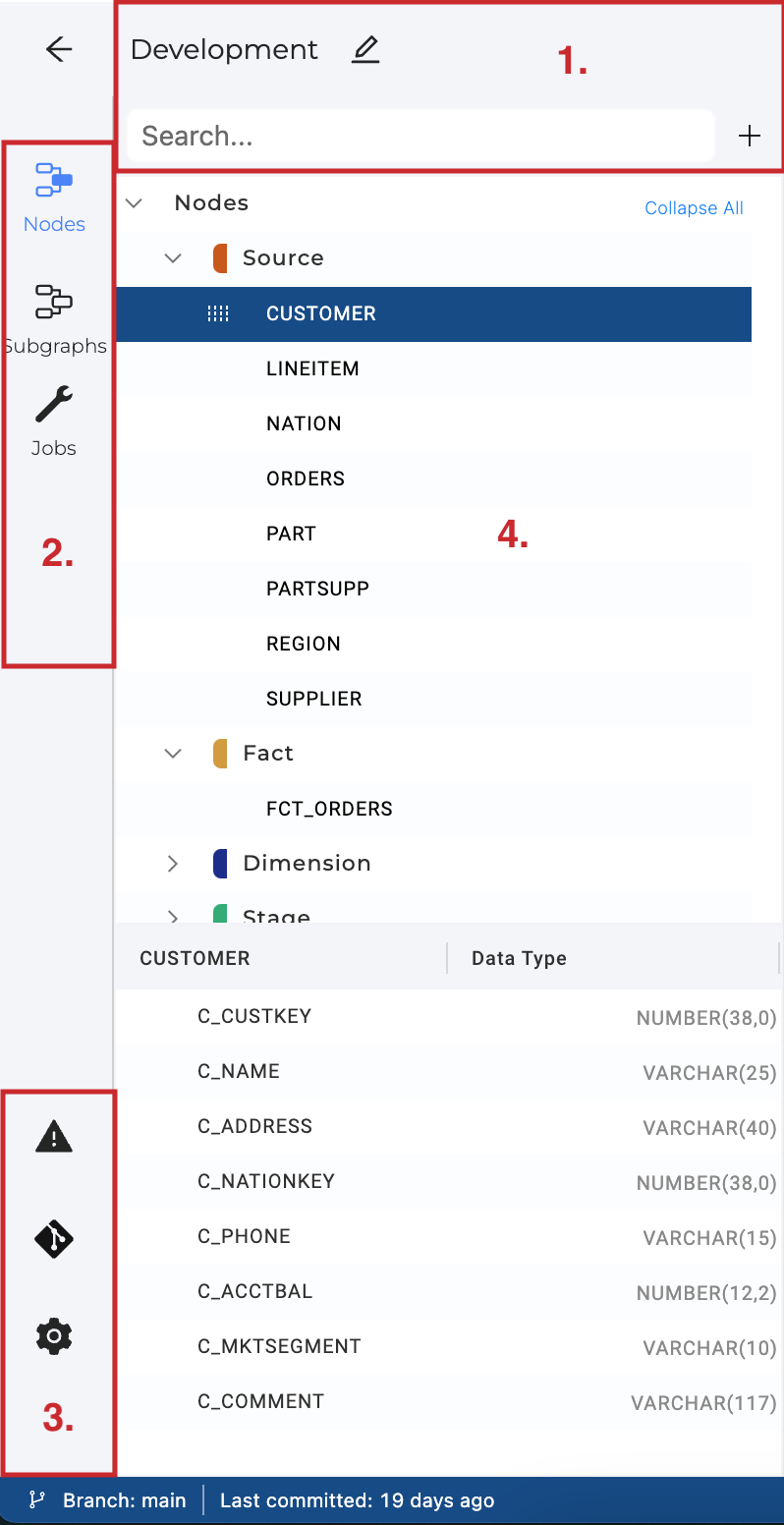The Build Interface
The Build Interface is where you'll spend most of your time creating nodes, building graphs, and transforming your data.

DAG(Node Graph)
A graph represents a SQL pipeline. Each node is a logical representation and can be materialized as a table or a view in the database. Currently, you can add the following out-of-the-box types of nodes: Source, Stage, Persistent Stage, Dimension, and Fact. You can also create their own Node Types.

- Node Graph - See all the nodes you are working on.
- You can also see Subgraphs from here.
- Results and Data Pane - This section provides the user with feedback as to exactly what SQL was queried and the ability to preview the data results within the application. See the status of your run. Validated, Created or Data Loaded.
- Filter and dropdowns - Add filters to only show the Nodes you want to see. Change the dropdown to:
- Graph - Shows the DAG.
- Node Grid - A table style list of Nodes. Use bulk Node editor from this view to change Node Type, Deploy Enabled, or Storage Location.
- Column Grid - A table style list of all the columns in all the Nodes. You can bulk edit columns here.
- Footer - The footer contains the branch the Workspace is attached to, the last commit made, the data platform name, user name, user role in the data platform, user email address, and organization name.
Build Interface Sidebar

- Workspace name - The name of the workspace you're working in.
- Search bar - Search the node name.
- Click the plus sign to Add Sources(data) or Create a New Node(add an existing node type to the DAG).
- Categories - Change the category to:
- Nodes, the default
- Subgraphs
- Jobs
- Other Options
- The Problem Scanner - List problems with the current workspace.
- Git - Shows working branch, commits, and code differences.
- Build Settings - Opens a tab with the Build Settings.
Browser

- Tabs - Any nodes you have open and the Node Browser will be visible here.
- Search - The filter that enables Selector syntax to be used.
- View as - Change the way you view the Node Graph.
- Graph
- Node Grid
- Column Grid
- Zoom in and out on the Node Graph.
- Run All nodes. You can also:
- Validate all nodes
- Create all nodes
- Validate create all nodes